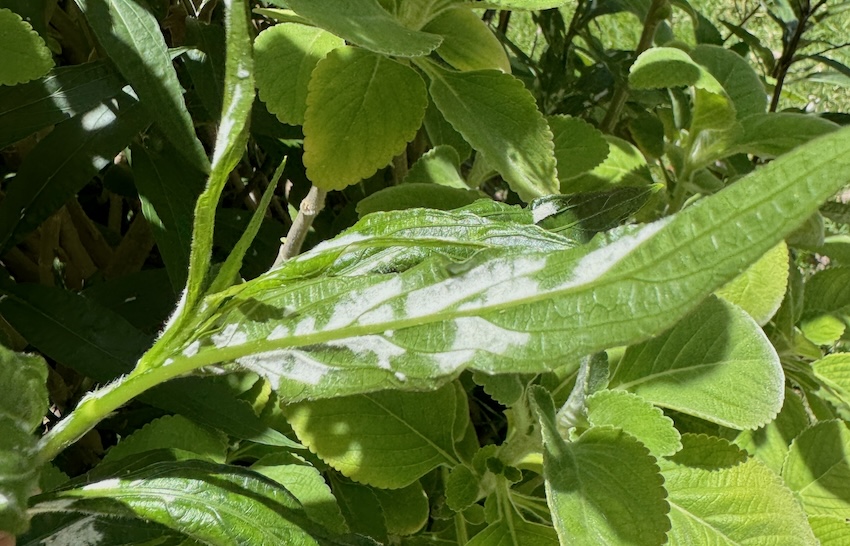Young leaf of Mexican petunia covered in white, velvety masses, similar to powdery mildew (fungus) or mealybugs (sucking insects), induced by tiny mites, called eriophyid mites, impossible to see with the naked eye (Leonard-Mularz, 2022). A single species of eriophyid, Acalitus simplex (Acari, Eriophyoidea), is reported associated with Mexican petunia (Ruellia simplex C. Wright (Acanthaceae)) (Ventura et al., 2018).
Micromites cause the plant to produce white, velvety masses on the leaves and stems. This distorted tissue provides shelter to the mites as they continue to feed (Leonard-Mularz, 2022).
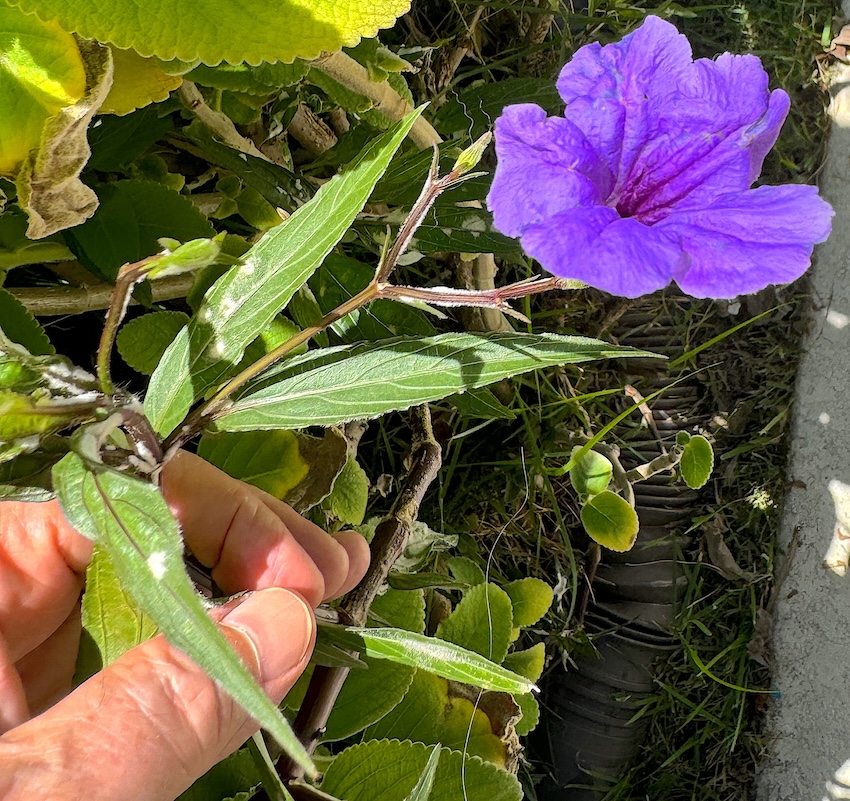
Leaves and branches of Mexican Petunia, Tampa, FL, 28°01’19.4″N 82°37’00.9″W, with white masses induced by the mite, and purple flower.
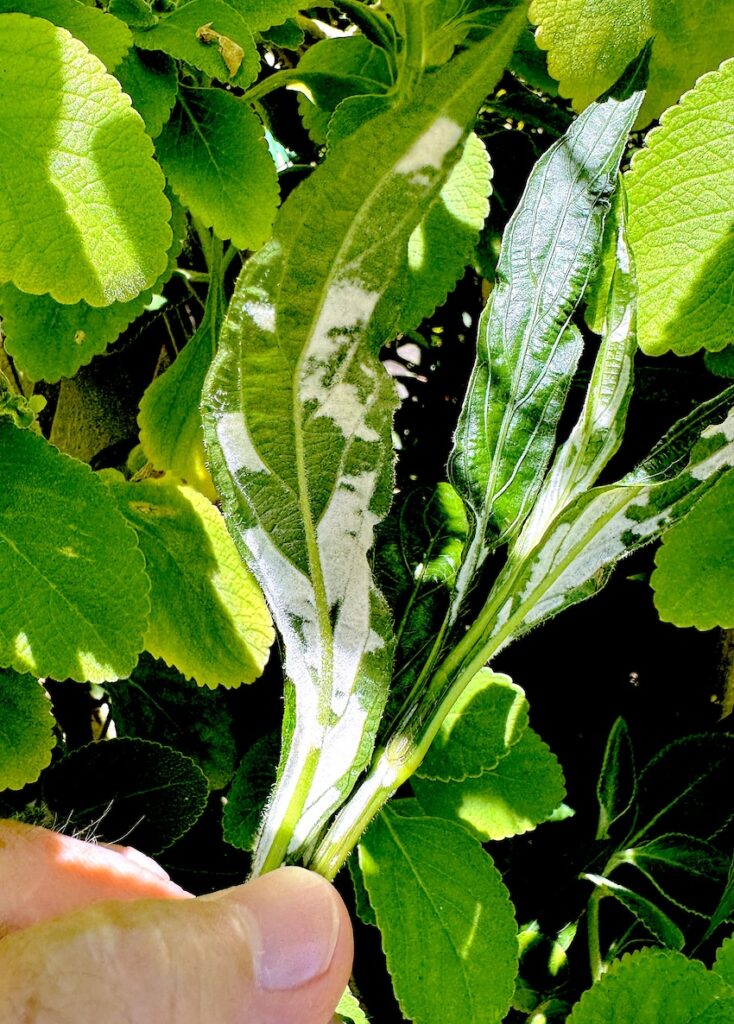
Deformed leaves of Mexican Petunia, Tampa, FL, 28°01’19.4″N 82°37’00.9″W, with mite-induced white masses.
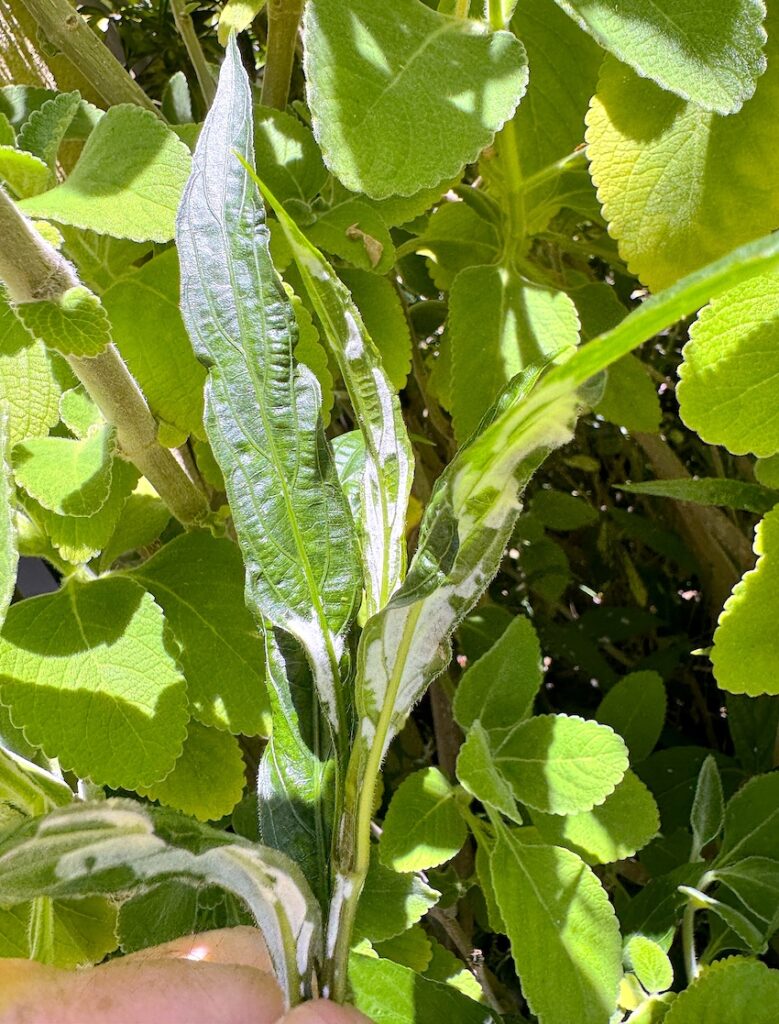
Deformed leaves of Mexican Petunia, Tampa, FL, 28°01’19.4″N 82°37’00.9″W, with mite-induced white masses; leaves in the background are from another plant (boldo, Coleus sp.).
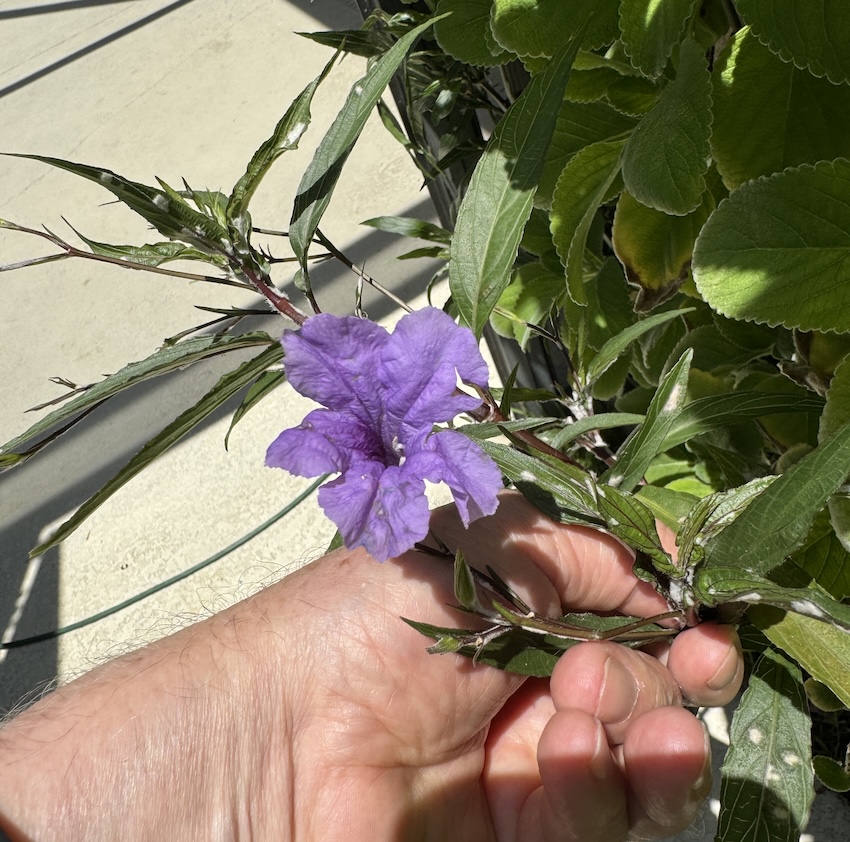
Deformed leaves of Mexican Petunia, Tampa, FL, 28°01’19.4″N 82°37’00.9″W, with mite-induced white masses; leaves in the background are from another plant (boldo, Coleus sp.).
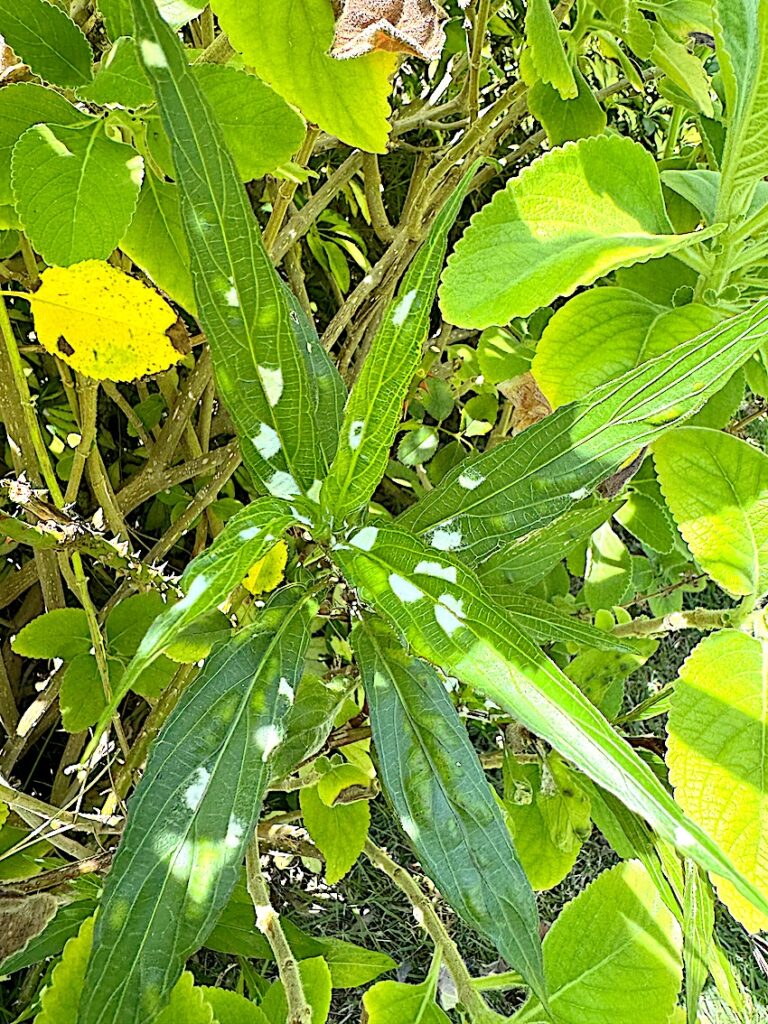
Deformed leaves of Mexican Petunia, Tampa, FL, 28°01’19.4″N 82°37’00.9″W, with mite-induced white masses; leaves in the background are from another plant (boldo, Coleus sp.).
These mites won’t kill the plants, but they won’t look attractive either. Mites prefer hot, dry conditions. During periods of new growth, applications of an agricultural mineral oil can be used as a preventative measure, as these tender parts of the plant are preferred by mites. However, damage can also appear on older leaves, stems and flower petioles. For existing infestations, heavy pruning followed by repeated spray applications will protect new foliage. Irrigation and fertilization should be reduced or eliminated at this time because this will promote more growth and therefore more infestations. Care must be taken when using horticultural oils, as phytotoxicity can occur at high temperatures, especially midday applications (Leonard-Mularz, M. 2022).
- LITERATURE CONSULTED
- Flechtmann, C.; Etienne, J. Two new species of eriophyid (Acari, Eriophyidae) from Guadeloupe and Marie Galante, with records on other plant mites. Zootaxa 271(1):1-7. Available in: https://www.researchgate.net/publication/281407288_Two_new_species_of_eriophyid_Acari_Eriophyidae_from_Guadeloupe_and_Marie_Galante_with_records_on_other_plant_mites. Accessed on: May 26, 2024.
- Gilnursery. 2021. Help! What are These White Splotches on My Ruellia? Available in: https://gillnursery.com/help-what-are-these-white-splotches-on-my-ruellia/. Accessed on: May 26, 2024.
- Leonard-Mularz, M. 2022. What is This? Gall Mites! University of Florida. IFAS. Available in: https://blogs.ifas.ufl.edu/monroeco/2022/08/30/what-is-this-gall-mites/. Acesso em: 26 maio 2024.
- Ventura, J.A.; Rocha, M.C.; Culik, M.P.; Flechtmann, C.H.W.; Moraes, G.J. de; Martins, D. dos S.; Navia, D. 2018. Primeiro registro de Acalitus simplex (Eriophyidae) associado à Petúnia Mexicana, Ruellia simplex (Acanthaceae), no Brasil. III Congresso Latinoamericano de Acarologia e VI Simpósio Brasileiro de Acarologia. Pirenópolis, Goiás. Available in: http://ww1.infobibos.com.br/anais/sibac/6/resumos/ResumoClac3Sibac6_0291.pdf. Accessed on: May 26, 2024.



